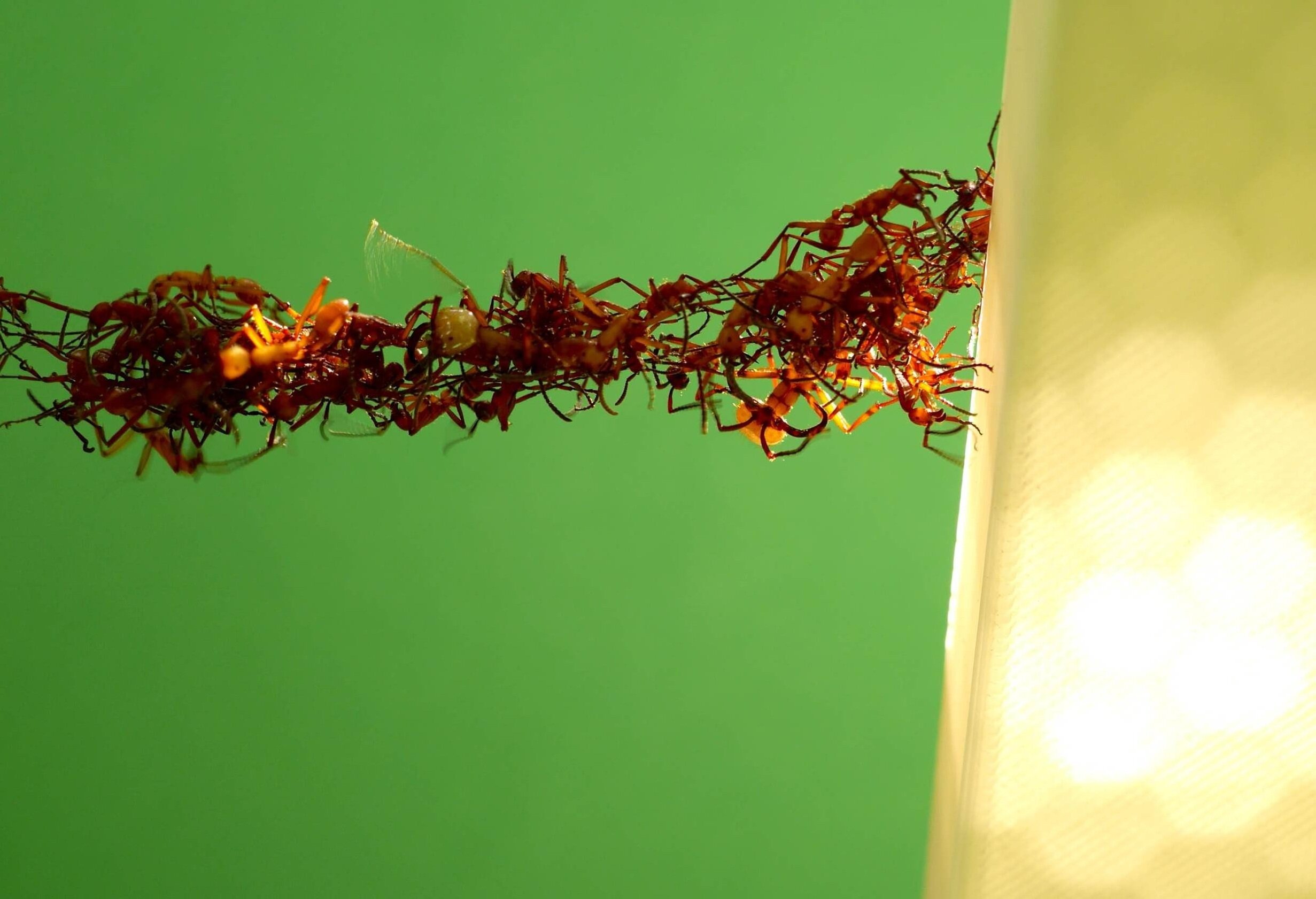
Army ant self-assembly
I study self-assembled structures created by the army ants Eciton burchellii and Eciton hamatum, nomadic predators that live in large colonies requiring a high rate of prey delivery. To facilitate this, ants self-assemble to create dynamic and responsive structures, deployed to manage the flow of traffic along their daily raiding trails.
In this responsive infrastructure, no single ant coordinates the construction process. Instead, these structures form by self-organization, through interactions between individual ants with access to only locally-sensed information. How such collective order can emerge from these simple interactions is one of the main questions underlying this research.
Bridges
E. burchellii and E. hamatum army ants form bridges with their own bodies to cross over small gaps and obstacles in the complex leaf litter terrain of the tropical forest floor.
In experiments performed as part of a project with Simon Garnier and Iain Couzin, we found that these bridges are highly responsive to the flow of traffic, and adjust their size based on the amount of traffic they need to support. They also break apart quickly if the flow of traffic is stopped entirely, and are quickly restored to their original size if disturbed.
To understand the dynamics of these structures better, I co-designed and conducted another set of field experiments, in close collaboration with Chris Reid, on Barro Colorado Island in Panama, to see if the ants were using these bridges to create shortcuts, as we suspected from observations. We also collaborated with Scott Powell, who previously studied the behavior of “pothole plugging,” when individual ants use their bodies to fill holes.
We designed an apparatus that diverted ant traffic from a straight path. If they were creating shortcuts, we expected to see a small bridge forming at the corner of the apparatus, then moving down over time – and this is exactly what we observed! However, the bridges did not move the same distance when we changed the angle of the apparatus. At small angles, the bridges moved far, but at larger angles, bridges only moved a short distance.
We realized that bridges at larger angles would grow much faster (in terms of area, and number of ants) as they moved down. This could become quite costly if many ants were required to stop foraging to form a structure. To analyze this in more detail, we worked with Albert Kao to develop a mathematical model of this cost-benefit trade-off.
Ultimately, we found that bridges move down to a point at which the cost of locking up additional workers in the structure begins to outweigh the benefit of the shortcut created. Thus, they make a collective computation determining how far to move a bridge. This computation results entirely from individual sensing, without any oversight or complex communication between individuals.
Scaffolds
Currently updating this page with more info about our new PNAS paper on army ant scaffolds.
more to come soon!
Garnier S, Murphy T, Lutz M, Hurme E, Leblanc S, Couzin ID (2013) Stability and Responsiveness in a Self-Organized Living Architecture. PLoS Computational Biology 9(3): e1002984.
Chris R. Reid, Matthew J. Lutz, Scott Powell, Albert B. Kao, Iain D. Couzin, and Simon Garnier (2015) Army ants dynamically adjust living bridges in response to a cost–benefit trade-off. Proceedings of the National Academy of Sciences. 112 (49) 15113-15118.

